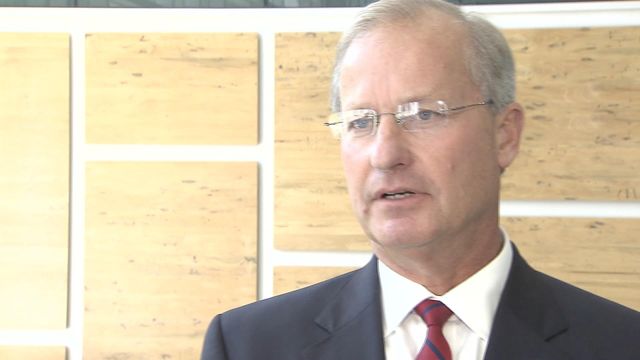DEQ chief: State tried not to be alarmist over well water safety
One week after state leaders publicly accused a state toxicologist of rogue science in setting a safety threshold for hexavalent chromium in drinking water, North Carolina's top environmental regulator now says his agency never disagreed with the scientific findings, just the way they were presented to well owners.
Posted — UpdatedSecretary of Environmental Quality Donald van der Vaart said Tuesday that the state's decision to rescind letters to people who live near coal ash ponds warning them not to drink their well water was an effort to add context to a complex scientific issue, not a disagreement with Rudo's conclusions.
The state last year issued "do not drink" orders to hundreds of people because of high levels of hexavalent chromium, a cancer-causing compound, in their well water from nearby coal ash pits. But most of those people received a second letter from the state Department of Health and Human Services and the Department of Environmental Quality this spring telling them the water was safe to drink.
Residents have said they don't know what to believe and that they don't trust Gov. Pat McCrory's administration, especially after a recent rift over the messaging led to the resignation of State Epidemiologist Dr. Megan Davies.
"(Well owners) should believe, first of all, that their water is safe to drink," van der Vaart said. "They should recognize North Carolina is the first state to close all coal ash ponds, and also for those neighboring residents, they’re going to receive water from municipalities."
The changed stance on the safety of the water resulted from the state abandoning its initial screening threshold of 0.07 parts per billion for hexavalent chromium, a standard set by a team of toxicologists at DHHS and DEQ and defended by Rudo and Davies. That standard equated to an increased cancer risk of one in 1 million.
Van der Vaart said Rudo's conclusions were never the point of contention. The issue, he said, is how those findings were presented to the public.
"That number was what the number was," he said. "The issue was what to do with that number, and we wanted to develop as much information for the well owner so that he could understand what that meant in context.
"We simply think that the use of the number as a black line – do not drink, do drink – was alarmist, and that was what we were concerned about," he continued.
Instead of the 0.07 parts per billion threshold, the state defaulted to the federal drinking water standard of 100 parts per billion for total chromium, which includes hexavalent chromium and less harmful forms of the element. The U.S. Environmental Protection Agency doesn't have a separate guideline for hexavalent chromium.
California, the only state with a drinking water standard for hexavalent chromium, doesn't even warn people against drinking well water that exceeds their standard, van der Vaart said, noting that California only informs people of the potential long-term risk from cancer posed by their water.
He said he believes the EPA standard, which was set in 1991, provides adequate protection for people, but he's interested to see if the agency adopts a standard specific to hexavalent chromium.
"Obviously, we want the EPA to take the latest science, and they are. They’re working on this. They’ve been working on it a long time," he said.
Environmental activist Erin Brockovich, whose work on hexavalent chromium in California two decades ago resulted in a movie named for her starring Julia Roberts, and the nonprofit Environmental Working Group sent a letter to the EPA on Tuesday, urging the agency to adopt a national drinking water safety standard for the toxic compound as quickly as possible.
Van der Vaart said some scientists question the 2007 study linking hexavalent chromium to cancer, which might be one reason the EPA has been slow to act. Regarding allegations of inconsistency, he pointed out that Rudo had accepted the federal standard for hexavalent chromium as recently as 2014.
He said he regrets that Davies resigned, but he disputes her contention that DEQ and DHHS are misleading people about how they are handling well water safety.
"A lot of the things we do every day involve risks of more than one in 1 million. We simply wanted to add that narrative, and that’s where the disagreement was. It wasn’t a disagreement on the number," van der Vaart said. "Nobody questioned the 0.07. The question was, how do we convey that to the well owner?"
• Credits
Copyright 2024 by Capitol Broadcasting Company. All rights reserved. This material may not be published, broadcast, rewritten or redistributed.






